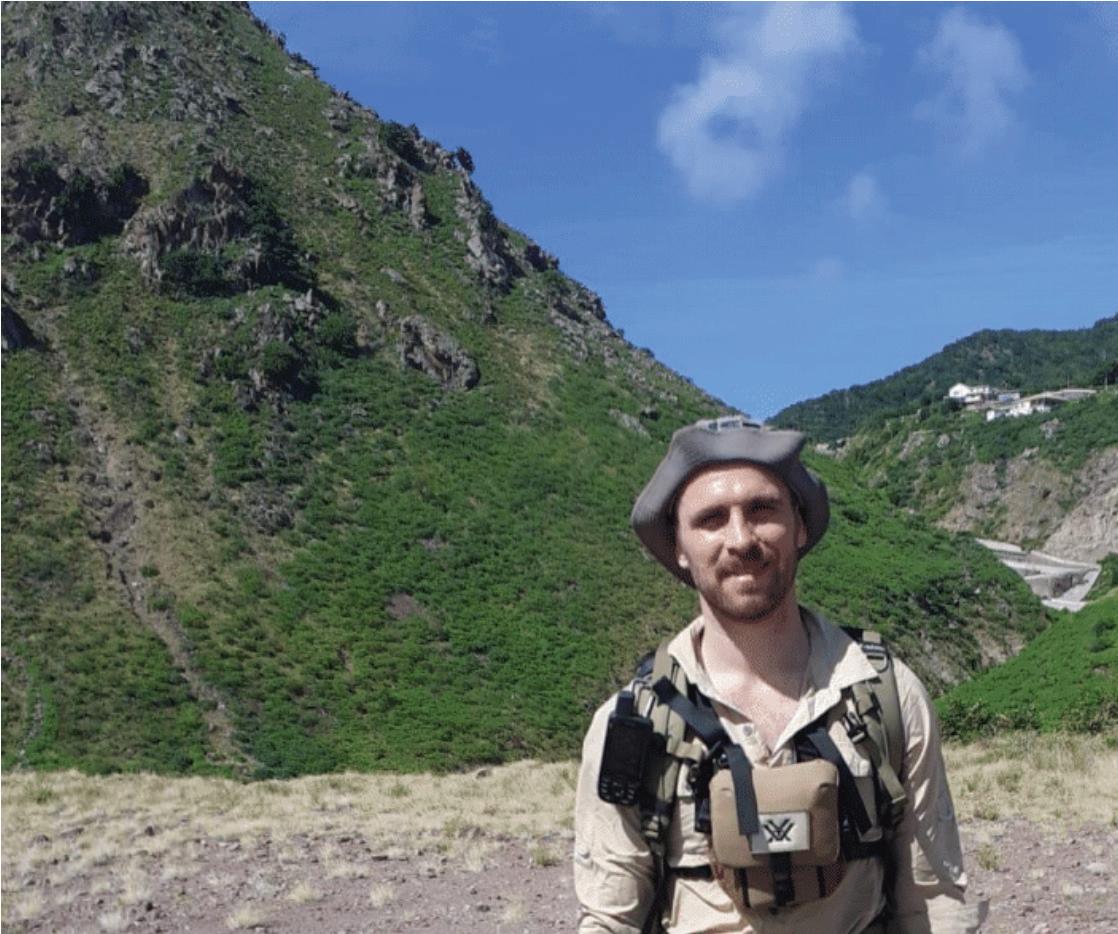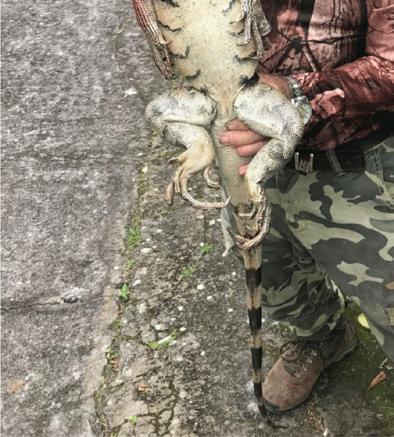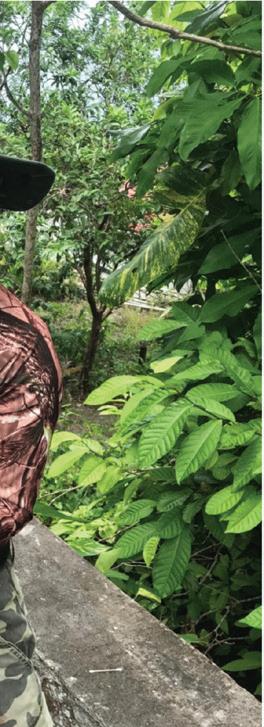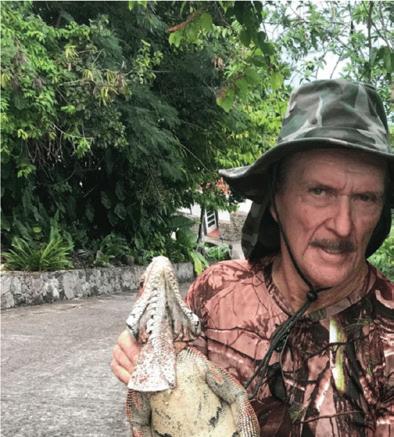
3 minute read
rapid Response to Address Discovery of Non-native Iguanas on Saba island

By Matthijs P. van den Burg
Advertisement
Overview
Until 2021, there were only two Lesser Antillean islands from which invasive non-native iguanas had not been described: Saba and Montserrat. On Saba, increased awareness of the threat of invasive species led to a 2021 iguana population assessment. It was only during that assessment that non-native iguanas were identified as present on the island, which likely had been present at least for a few years. Their presence is highly problematic, given that nonnative iguanas become larger and are reproductively more successful than the native species, Saba Green Iguana (Iguana melanoderma), meaning that population could be overtaken by non-native and hybrid iguanas if those are not removed.
Accomplishments
Identification of range and abundance of nonnative iguanas on Saba
We directed our efforts around two areas that were identified during our 2021 fieldwork; these were the only areas where non-native iguanas were sighted: the harbor area (H), and the area known as English Quarter (EQ). We observed these areas using binoculars and a digital camera, identifying how many iguanas were present and where. We photographed those iguanas to assess their species based on scale morphology and coloration patterns. Data confirmed the number of non-native iguanas present is low, but higher than initially thought in 2021, especially in the EQ area.
Remove all observed non-native iguanas on Saba
We caught 14 iguanas using pole-lasso techniques; three were non-native. We collected a blood sample as well as over 15 different morphological characters and different detailed photographs from those three. We also shot one additional non-native iguana that was residing high on the cliffs directly next to the harbor, which was inaccessible for capture, first obtaining written permission from the Island Governor. There are three other non-native iguanas there, which we will need to return to eliminate.
Traps baited with fruit will also be used to try and catch those remaining iguanas on the plateau level above the cliffs.
Confirm species status and origin through genetic analyses
The process of acquiring CITES permits for the export/import of collected blood samples has been slow, so genetic analyses of collected blood samples still needs to be performed. Currently, we await approval of the CITES export permit, and our collected samples remain on Saba for now. We believe that all permits will be available during our next fieldwork in 2023.
Knowledge tranfser to Saba Conservation Foundation to continue identification and removal Park ranger James Johnson accompanied us on six field days, allowing for knowledge transfer about iguana ecology, capture techniques, and, most importantly, identifying nonnative iguanas.



James will continue monitoring for nonnatives. Although we have several ways of identifying pure non-native iguanas, identifying hybrids remains difficult, especially given the presence of some Saba iguanas on St. Maarten. Finding potential hybrids could mean animals arrived from St. Maarten, instead of having been born on Saba. Hence, we are still learning how to identify hybrids with 100% certainty in the field, and the collected blood samples will provide more insight once analyzed.
Strengthening public awareness
Each year, the Sea and Learn NGO organizes a monthly event during which local, regional, and other international scientists are invited for a visit to Saba to give talks and excursions. The timing of our project changed, and we were unable to attend; however, we plan to attend the 2023 Sea and Learn event. We did have individual conversations with local residents while performing fieldwork, explaining the situation and giving people the experience of holding/touching iguanas and admiring them up close.


Looking Ahead
Additional fieldwork to tackle the invasion of nonnative iguanas remains highly necessary. Funding for such efforts have been obtained through the Dutch Ministry of Agriculture, Nature and Food Quality, allowing for another three-week intense fieldwork period in 2023. Then, we will again travel to Saba and work closely with the Saba Conservation Foundation, especially James Johnson. After that 2023 fieldwork effort, all collected blood samples will be transported to The Netherlands and analyzed at the University of Amsterdam, as well as the French GenIndexe laboratory, to understand the genetic origin of sampled iguanas. We further hope to inform students about this situation, in collaboration with Wageningen University Research. More work also needs to be done to identify non-native iguana nest sites around the two areas.










